If you read my review for Atelier Lydie & Suelle: The Alchemists And The Mysterious Paintings, then you might recall that it was the Arland trilogy that broke me. I couldn’t get past the fact that Gust could make a series so endearing and fun, but hamper everything with time constraints.
Honestly, it felt like a mean joke; one made all the more cruel by the fact that those very time constraints were the only parts of the original trilogy — Atelier Rorona, Totori and Meruru — that I took real issue with. The characters? Loved them. Basic Gameplay? Somewhat standard, but no complaints. Alchemy? Awesome. Time constraints? Pass. So I did — for five long, Atelier-less years.
So the furthest thing from my mind back when Koei Tecmo confirmed the Arland Trilogy would be coming to modern platforms was the possibility of a continuation. “Time for a new trilogy,” I thought. “We’re getting an anniversary title soon, so now’s the perfect opportunity for Gust to take everything it’s learned throughout Atelier’s expansive history and start fresh.”
And it turns out I was dead wrong: we’re back in Arland. But you know what? I’m glad we are, because my return in Atelier Lulua: The Scion of Arland has been a joyous one.
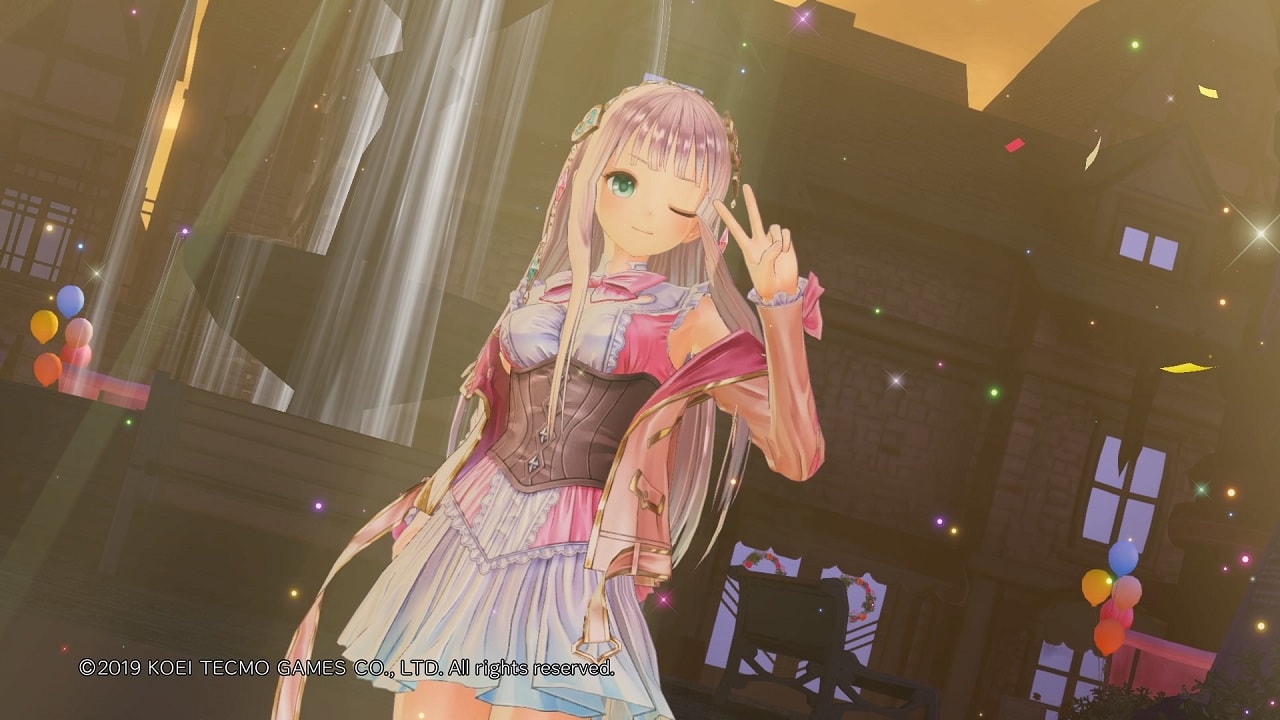
Much like its predecessors, from the soundtrack to the overall aesthetic, Atelier Lulua bubbles with charm. Unlike its predecessors though, this game is designed so that everyone can actually experience it.
In short: Lulua is highly accessible.
Want to go on a synthesis bender? Don’t worry, there’s no time limit. Having trouble understanding a specific mechanic? There’s a series of guides in the pause menu. Need to go somewhere fast? Use the fast travel function in town. Worried about your item expenditure? You’ll soon find yourself bathing in them once certain features are unlocked.
There is no part in this game that hasn’t been designed to be more approachable when compared to past entries. There is still plenty of complexity, of course, just that newcomers aren’t going to feel compelled to pull their hair out before they reach those parts.
However, while the gameplay was designed with newcomers in mind, the same can’t be said for the overall narrative — it’s for experienced players only.
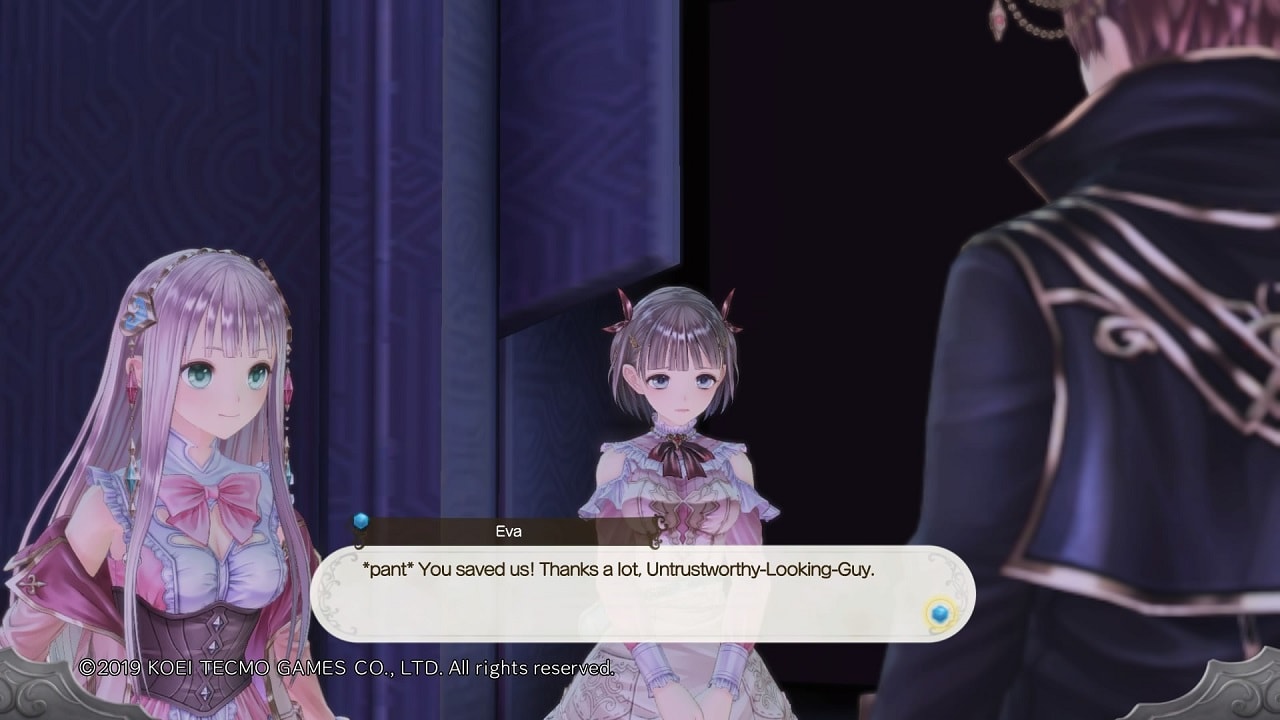
Actually, let me clarify: anyone can understand Atelier Lulua’s narrative, but only a portion of them will be able to fully appreciate it.
This game takes place roughly seven years after the conclusion of the original trilogy, so while many of the characters protagonist Elmerulia “Lulua” Frixell meets during the course of the game will be first-time encounters for newcomers, those meetings will be reunions for everyone else.
Piana might just be Lulua’s teacher to newcomers, but everyone else will remember her as the 13-year-old girl who they saved from being eaten in Totori. Meanwhile, Keina Swaya would only come off to newcomers as the beloved Guild Receptionist in Arls, but experienced players will know she’s actually Meruru’s best friend. Even the significance of Rorona Frixell, Lulua’s mother, will go over a newcomer’s head.
Instead, such players have to settle for the new cast members to grow an attachment to. They aren’t bad by any means, and I quickly found myself enamored with the lovable Lulua whose only dream is to become an alchemist and live up to her mother’s reputation, along with the caring Eva Armster who can be as sweet as candy at one moment and as scary as a demon in the next, but they represent a minority of the cast in a game that leans heavily on nostalgia.
None of this is to say that newcomers have to play the original trilogy though — they can, and they’ll make it though just fine. And fortunately, the narrative is the only area where newcomers will find themselves at a genuine disadvantage. Comparatively, when dealing with Atelier Lulua’s core gameplay, they’ll get along just fine.

Lulua’s journey to match the alchemical prowess of her mother will take her from one end of the continent to the other, visiting three major hubs and a plethora of locations such as a dilapidated castle and technologically advanced ruins.
Honestly, none of these areas are worth writing home about in the graphics department (they’re improving!), but they’re well-designed and varied enough to stave off the monotony that will inevitably come as Lulua repeatedly bleeds their resources dry.
And there are plenty of ways she can go about doing this, but the quickest method is simply by hand or smacking something with her rod. However, once her quests and recipes call for rarer materials, she’ll have to use special tools, such as bombs, fishing rods, bug nets and pickaxes, to get what she wants.
However, there are many materials that not even the almighty bomb can acquire, so Lulua will need to fight for them instead.
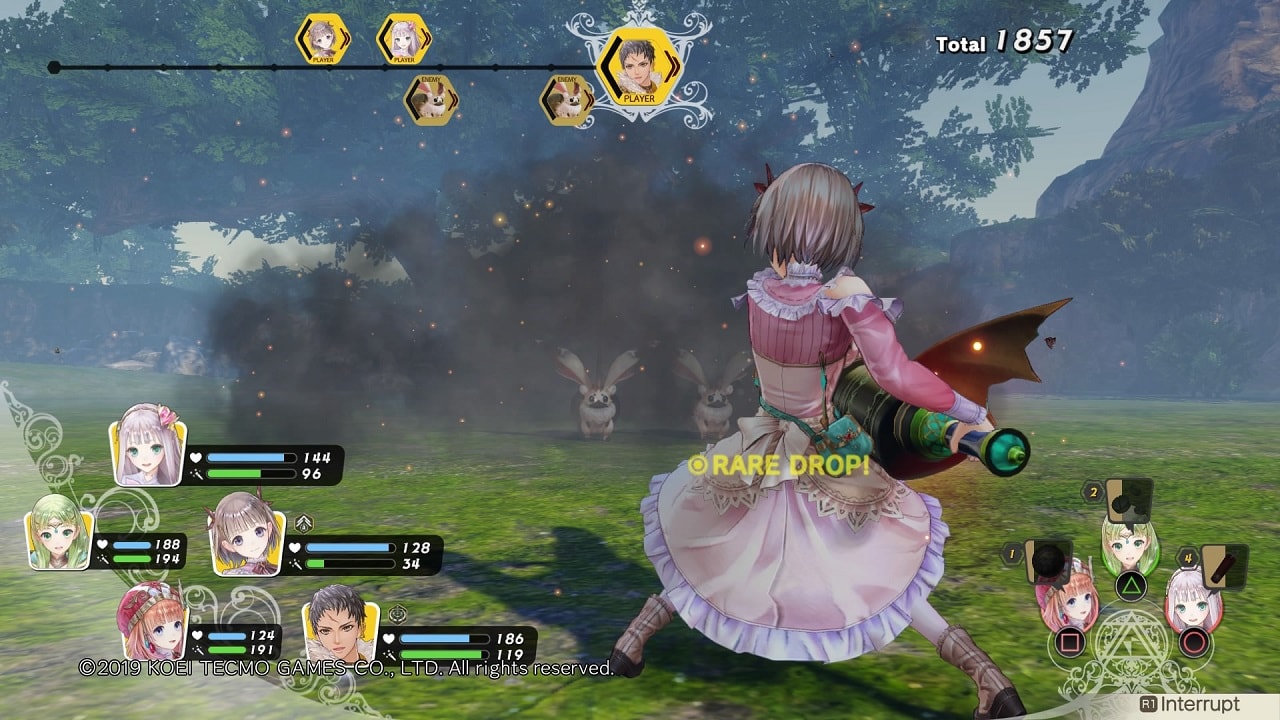
Combat in Atelier Lulua isn’t particularly good or bad — it just exists. This isn’t necessarily a bad thing, just that battles aren’t all that memorable or anything you’ll ever be excited about. There are some nuances that serve to distinguish it from other turn-based JRPGs at least, such as using synthesized items to deal damage and inflict status ailments, but that’s mostly it.
Compared to other Atelier titles though, I would say Lulua is a bit more technical.
For instance, instead of the past format where three frontline characters are paired with one each from the back, your party now consists of three frontline characters and two in the rear. This new layout provides the setup for two of the game’s mechanics: follow-up attacks and Primal Arts.
Follow-up attacks work the same way as before, allowing a backrow character to jump in and do an attack of their own if the proper conditions are met, but now two characters can fulfill those conditions instead of the usual one; and Primal Arts provide bonuses to certain party members based on their current formation.
There is one mechanic I really liked though: Interrupt — it’s kind of busted. As the battle progresses, a meter in the bottom-right section of the screen fills, and an alchemist in your party will be able to instantly get a free turn and use a pre-set item once said meter is full. What’s so great about that? First off, these items don’t run out. Second, each alchemist has an Interrupt Skill, like Lulua having a chance to re-activate her Interrupt command, further enhancing the strength of your items if the right conditions are met.
Of course, whether it’s fighting or gathering, everything is done for a single purpose: Alchemy.
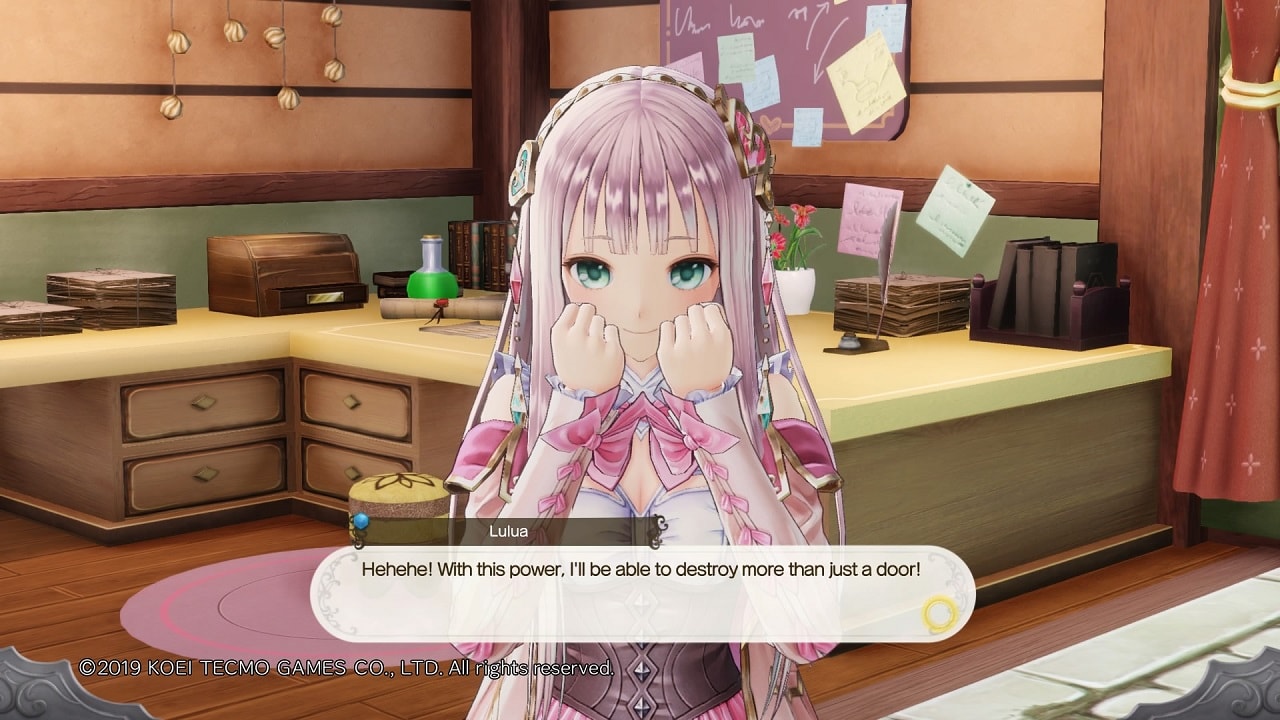
I can’t overstate how much I love the alchemy feature in the Atelier series. There aren’t many games out there that allow the player to make practically anything they want, and even less that allow those items to have a plethora of possible outcomes depending on which materials are used. Did you use a different material to make your magic sword? Watch as your new creation gain the ability to leech MP, at the expense of a chunk of the user’s health.
In the end, the only thing you can be sure of is this: low-quality materials will always yield low-quality items, while high-quality ones can lead to devastatingly effective results if you play your cards right.
Compared to Lydie & Suelle, the alchemy in Lulua is far more streamlined and straightforward. Gone are the grids and esoteric symbols from the past, now replaced by up to four distinct bars denoted by a specific color. Your objective: fill each bar by using the proper materials. The more they’re filled, the stronger their effects become.
It sounds easy enough, but it’s not as simple as you’d think.
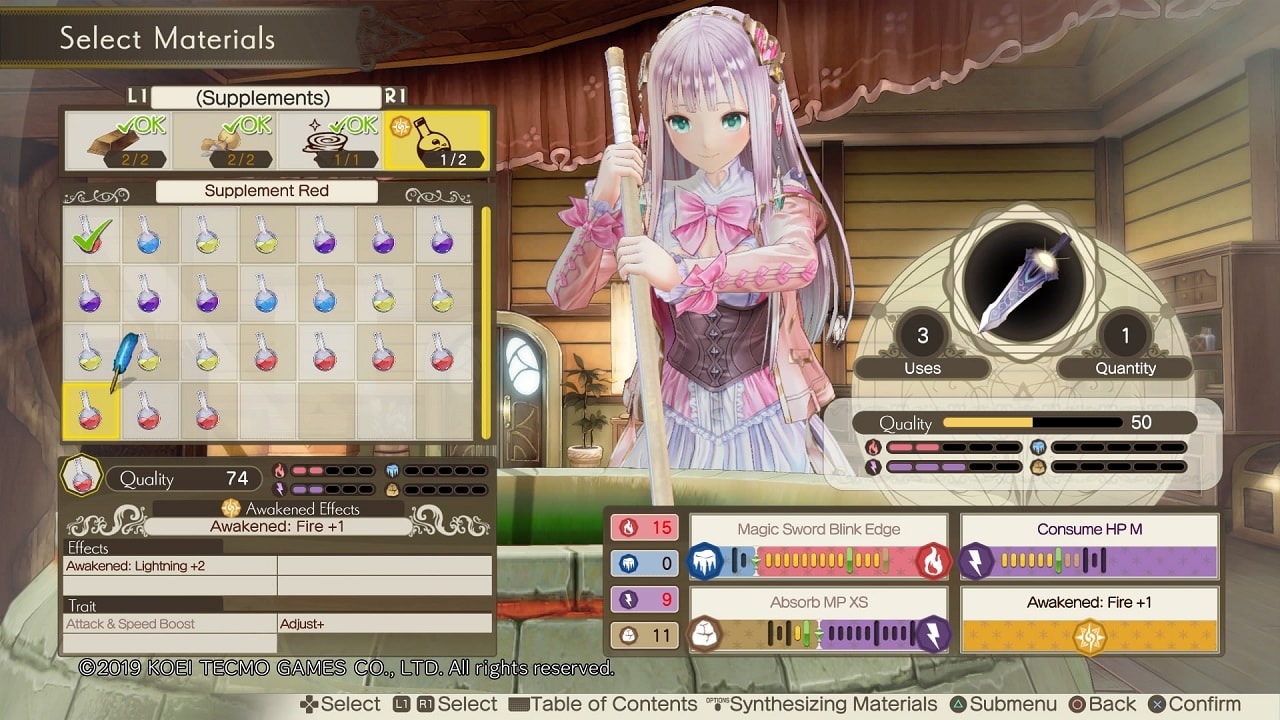
Aside from the fact that filling one bar can negative impact your progress on another, the system itself is incredibly restrictive. There’s a cap on the maximum quality your synthesized items can attain for most of the game, while TP, the resource used to transfer traits from materials to the finished product, is in short supply early on. And even when you do have a healthy supply of TP, many of the stronger traits are locked behind fusion traits that are hard to come by until the game’s later stages.
Fortunately, there’s a new feature, Awakened Effects, to help players out. Simply put, they are extra traits that synthesized items can inherit from their ingredients without any extra TP cost. Even the basic ones, such as increasing how much of a specific bar an item fills, are useful, but things get absolutely ludicrous when effects such as enhanced damage, unique stat bonuses and special status ailments come into play. There’s even an effect that lets you change an item’s classification, allowing them to be used in a wider range of recipes and allow for even more potential combinations.

Even with its many facets, alchemy is still very approachable thanks to the Alchemyriddle, the mysterious book that Lulua “finds” at the start of the game. The book is separated into pages that correspond to a specific story chapter, each containing a set of required and optional riddles that grant Lulua new recipes, abilities and even zones to explore if she solves them.
Admittedly, there is the issue of story progression being impeded occasionally due to certain missions requiring Lulua to complete tedious objectives like battling or synthesizing a certain number of times, but this downside is offset by the fact that all of the rewards are properly tuned relative to their location in the book. If you unlock a recipe in Chapter 2, then you can be sure the ingredients necessary to make them are available at that point too. Similarly, a new zone unlocked in Chapter 4 will most assuredly house enemies roughly on par with other enemies encountered during that chapter.
In the end, synthesis in Atelier Lulua might throw some for a loop at first, but those who persevere will be greatly rewarded. Stronger gear; more effective items; better quest rewards — they’re worth the effort.
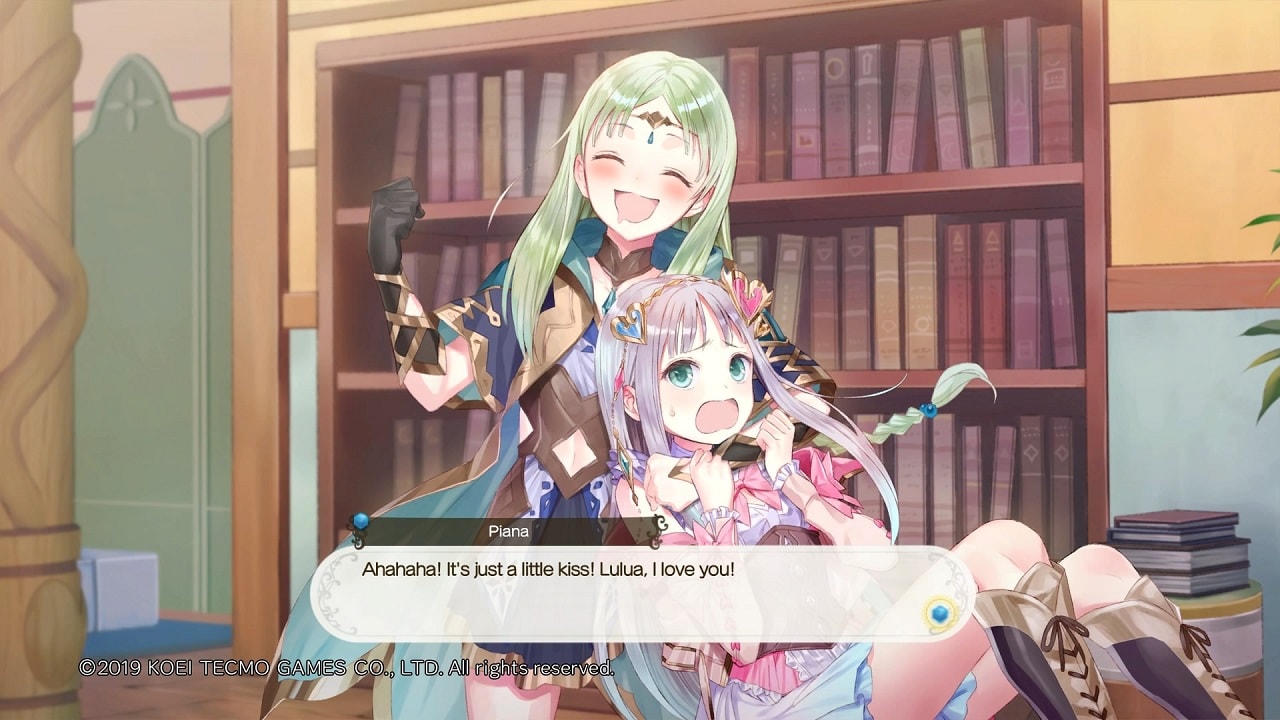
Lastly, I should mention that once again there is no dub. I can certainly live without it, but I’d be lying if I said I wouldn’t miss the voices of English VAs like Christine Marie Cabanos, Liam O’Brien and Brianne Brozey.
One thing I definitely wouldn’t miss though, is the ridiculous DLC.
I don’t know why Koei Tecmo suddenly decided to become EA, but I’d be highly appreciative if it stopped. I previously discussed its DLC practices in Dynasty Warriors 9 and again during my review of Dead or Alive 6, so none of this is new to me, but there’s just something about an Atelier getting three separate Season Passes (if the Japanese version is any indication) that sends me up the wall.
And honestly, even that probably wouldn’t bother me too much were it not for the fact that both Totori and Meruru are poised to become DLC characters featured in separate passes. This is the same situation that played out with Lucia in the last game where you have characters who should be able to join you at a given point but don’t for some reason. There could have been a cool late/post-game mission to unlock them, but I guess paying real money works too.
Seriously, please stop.
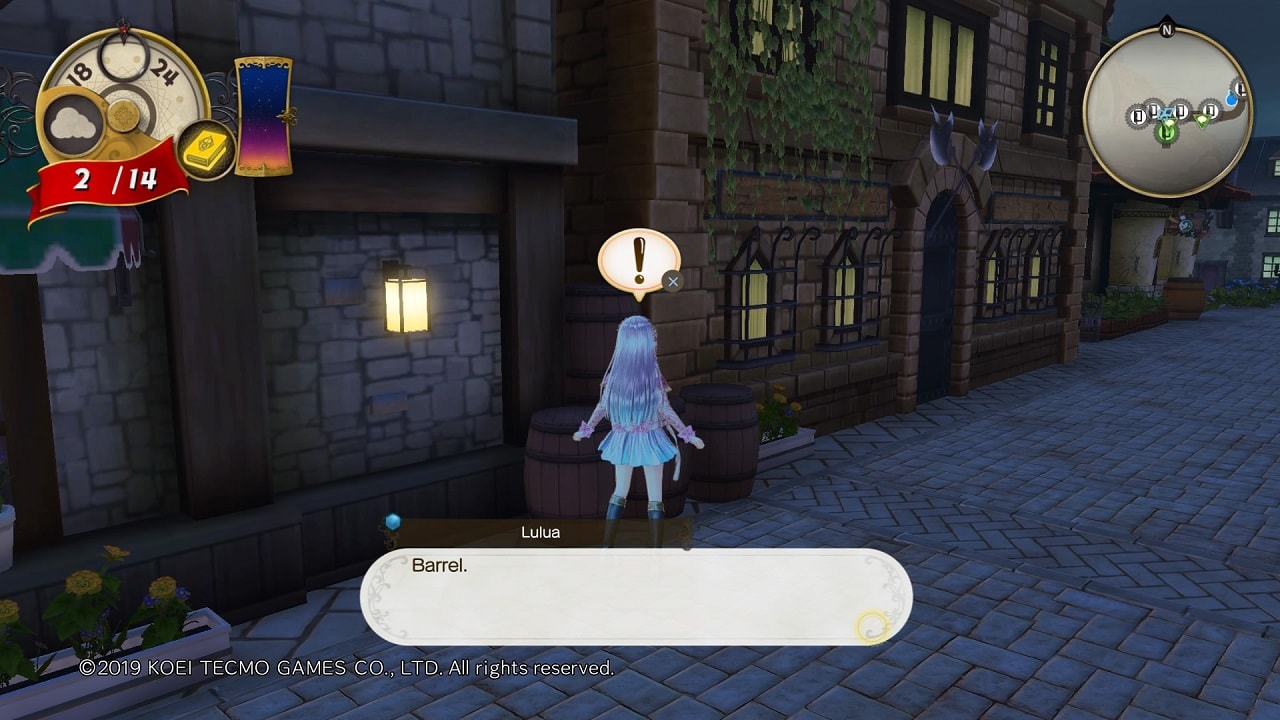
The Verdict
Atelier Lulua: The Scion of Arland proved me wrong twice. Not only did Gust actually make a follow-up to a completed trilogy, but I actually played and ultimately enjoyed it after I swore I wouldn’t. Though between the addictive synthesis, endearing characters and fun story, I probably should have expected as much.
In the end, it really says a lot that the most I can genuinely fault the game for is that its narrative is somewhat antithetical to its intent. Lulua wants to be a solid entry point for newcomers, and though it is mostly successful, it’s those same newcomers who are often left out in the cold due to all the nostalgia and Atelier-branded fanservice featured throughout.





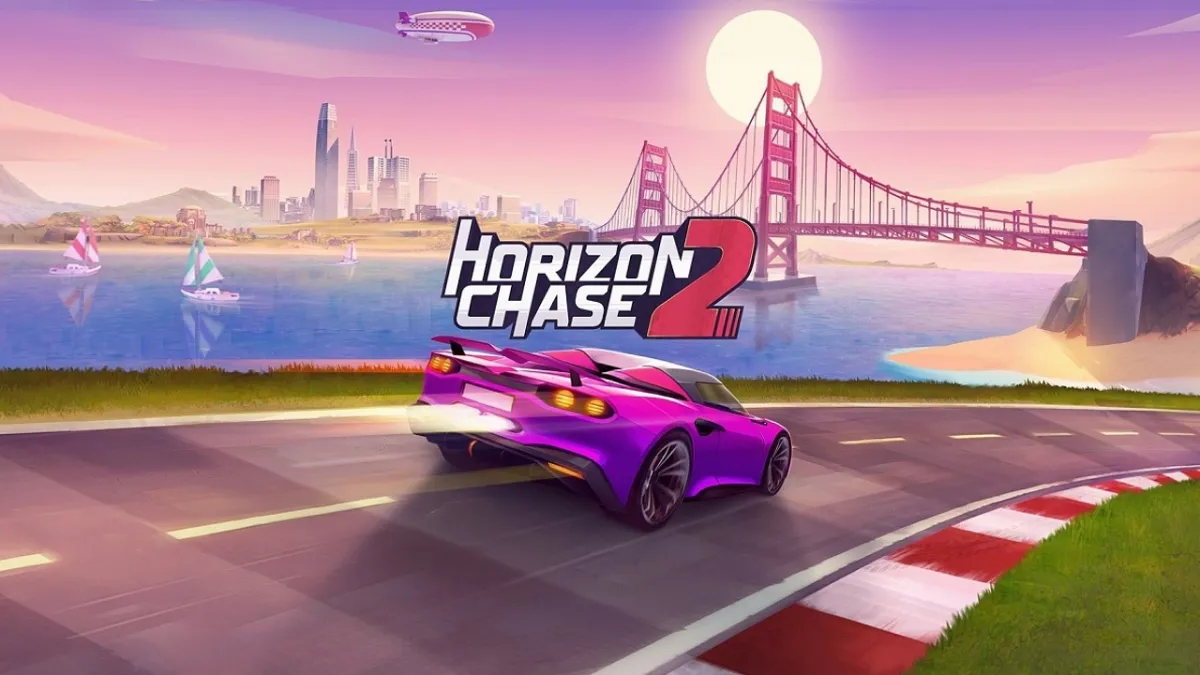

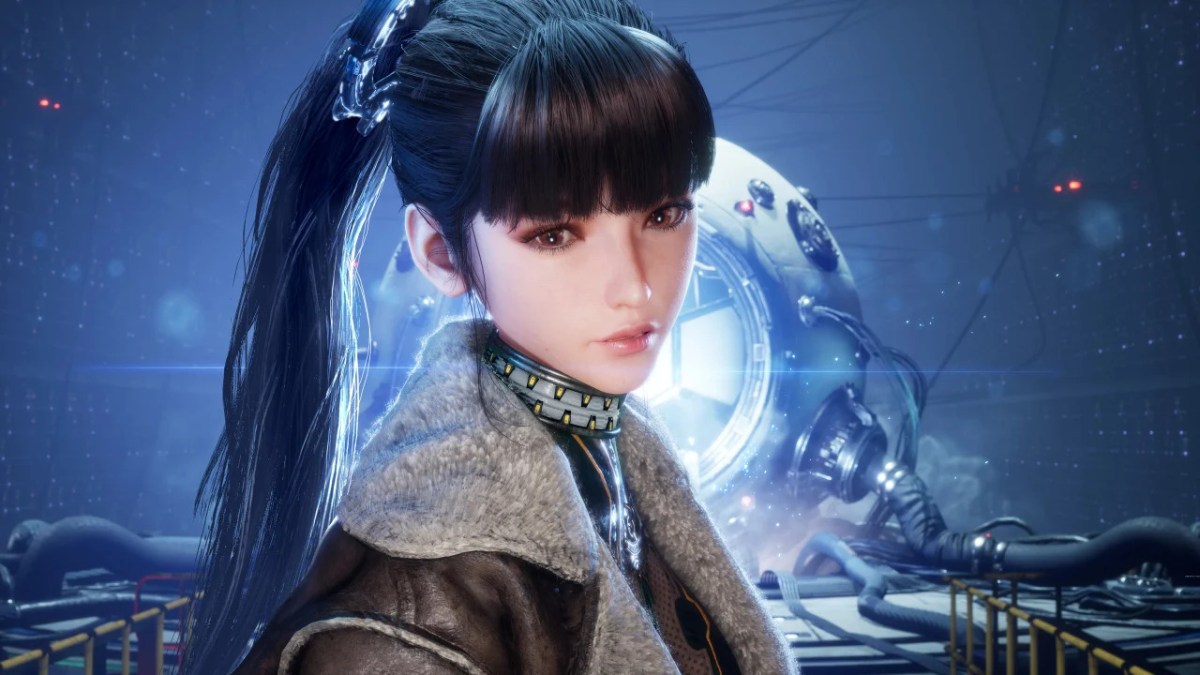

Published: May 25, 2019 11:19 am